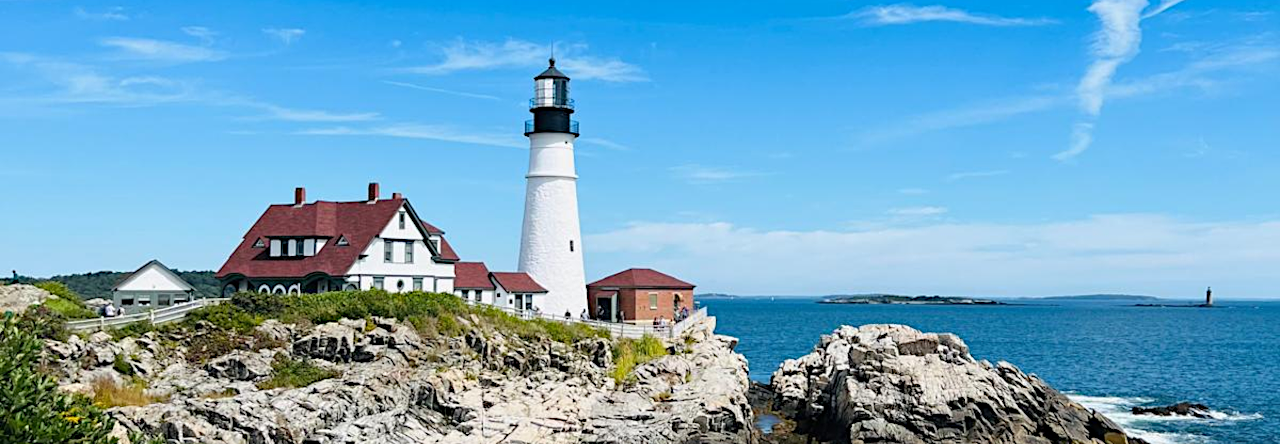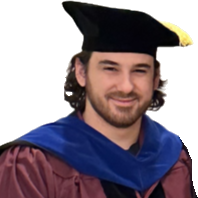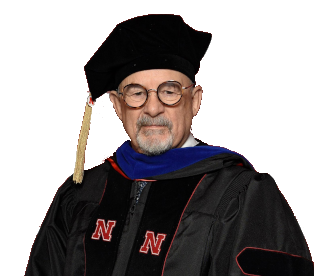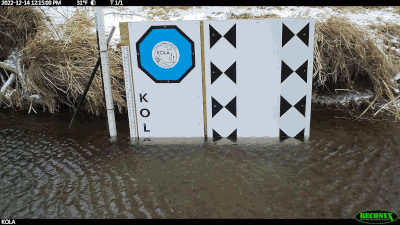The house is getting to be more functional every day. This afternoon I set up my old work computer and the new Brother laser printer and a 27″ screen I will use until we get my office downstairs up and going and the bonus room finished out. Then, we hope to put this office in the bonus room with the much bigger screen we currently use for watching videos until the projection screen is installed in the bonus room. The reason for all this organizing is that Lorena and I are deciding what we will do next. There are lots of things on the “possibles” list. For Lorena, they mostly have to do with throwing pottery and studying to be a Master Gardener. For me, it has to do with work for the GRIME Lab and possible second Master of Science and Doctor of Philosophy degrees that move the GRIME Lab forward. More about all this later.
Category: Post-doctoral research
My buddy and fellow UNL student, John S. sent this image that he took from his place in Arizona, not too far from where Christian earned his PhD. I got to work with my UNL professor Troy and a University of PhD student with whom we have been working. It just feels good to have a day of collaboration with people of good will. I am looking forward to doing a lot more of this if I ever retire.
Troy and John from University of Nebraska-Lincoln along with Chris from University of Nebraska-Kearney are presenting three different posters at the American Geophysical Union Conference in Washington, D.C. It sounds like it is going really well. The really good part is that, God willing, they are going to get together with Kelly for dinner on Tuesday night. I have my name as a co-author on all three of the posters.
I am not sure how this happened, but if everything goes according to plan I will be a co-author on nothing short of four posters: three at the annual American Geophysical Union (AGU) conference in Washington, D.C. and one at the annual American Society for Cell Biology conference in San Diego, CA. We are all pretty excited to see the reception received by the posters. A lot of research went into virtually all of the posters.
The last couple of weeks has been nothing but programming around the clock. We are getting ready for a product release and a trade show at work so I have been going through the weekends at my computer, but in addition to that, I decided to do some major upgrades to the GRIME2 software I did before and during my doctoral research. The game plan is to write one more serious journal article, then move on to start working on the use of the GRIME-AI software package being developed by my friend and fellow PhD student, John Stranzl. I probably won’t get to start doing that until January or February of 2025, God willing, but that is the plan.
There are interesting things happening in my avocational, post-doctoral academic pursuits. We did a couple of projects with an important AI/ML research professor at ITESM Guadalajara during my PhD at UNL. When we ran into a Biology professor at Gannon University in my work at Thrive Bioscience who had a need for our instruments, but not a lot of resources, we were able to work together to produce results for all three parties: Thrive ran images for an experiment at Gannon which were sent to ITESM for analysis with AI. Gannon and ITESM received academic benefits in terms of research suitable for publication and student projects while Thrive was able to demonstrate that third parties were uniquely able to produce meaningful results from the outputs of the Thrive instrument used in the experiment. We are hoping we can do more projects like this with these and other institutions in the near future.

I spent a few hours this evening running some measurements on images captured by a PhD student as University of Kansas using the GRIME2 software advanced during my doctoral research at University of Nebraska-Lincoln. She did a great job gathering the images. I actually acknowledged her in my dissertation defense and used a couple of picture of wildlife (bison and deer) that wandered in front of her camera during the course of her research. It truly is a joy to be part of this greater community of Natural Resource Sciences research in the Midwest–could not find a nicer group of people anywhere. Jessica plans to use these results in one of the chapters of her dissertation.
My University of Nebraska professor, Troy, just sent out his “first day of school” picture for his 26th year of school. Because of the advent of Artificial Intelligence, he decided he needed some formal education in computer and data science. He started an M.S. in Data Science about a year and a half ago and this is the last class of the first half of the program. He is picking up a ton of skills like Python, R, and a bunch of database and visualization stuff. It would not hurt me to take a few classes like that. I am sure I would enjoy them, but I am leaning toward something, maybe a little less practical and little more esoteric like something in Art, History, or Philosophy.
Troy is out in the Sandhills of Nebraska again. I hope he views this as a major perk of his job. He sent this picture and several videos today. Imagine having to drive out their once every 4-5 months. And sometimes, he even gets to take his kids. I had no appreciation for that part of the world until I started my doctoral research which entailed taking pictures of the Platte River every fifteen minutes or so. The amount of wildlife, both birds and the four-footed kinds, was staggering. And the views, especially when appreciated over all the seasons, were breathtaking. The sad part is that I have never been there. I have only really just seen the pictures. The research we did was significant and I am glad for that, but I really hope I get to go there someday.

The current incarnation of the GRIME2 (v0.4.0.0) ground-based camera water level measurement program was a port of much earlier code that was updated and pushed to GitHub on September 12, 2020. The earliest date I can find for the code that was ported was v0.1j.0 committed (to SVN) and released on July 30, 2009. My PhD adviser at University of Nebraska-Lincoln (UNL) and I had a fairly long impromptu meeting this afternoon about the direction we are taking with this software and work. I have decided I am going to disaffiliate from UNL (to a certain extent–never not going to love my experience there) and focus my efforts on research associated with the GaugeCam GRIME Lab. That, in some sense is a difference without a distinction. What is really needed right now that I can contribute is
- publication of research that has already been performed,
- extension of the GRIME2 software package to handle much smaller calibration targets,
- integration of GRIME2 functionality into GRIME-AI (Artificial Intelligence),
- use of GRIME-AI to answer interesting hydrology, ecology, and agricultural questions,
- and publications of those results in appropriate journals.
So, that is my current plan moving forward, as part of GaugeCam and the GRIME Lab. Part of the reason for that is so that we can investigate the possibility of developing a user base and commercializing GRIME-AI as an independent entity, unencumbered by the lumbering bureaucracy of an institution of higher learning. That is why I am pleased that we had the foresight to license GRIME2 with and Apache 2 license and solely in my name long before I stared working with ANY academic institution.
Troy (my professor at University of Nebraska), John (my old buddy from the Bronx, colleague, and fellow student), and I have big plans going forward. My main contribution will be to perform research on water level measurement with ground-based cameras and the use of the GRIME-AI software package from GaugeCam to detect and measure as yet undefined “things” of interests to ecologists and hydrologists. But first, I need to work with Troy to finish an in-progress article based on the fourth chapter of my dissertation, then gather data and write a second paper on our efforts to reduce the footprint of the calibration target we use in our water level measurements to the same size as a typical staff gauge used by the USGS. If that second paper is successful, we plan to extend the GRIME2 software package to accommodate those smaller calibration targets. Troy has a grad student who is currently writing code and running data for the second paper. It has been an enjoyable process working with him.

When I first started back to school at University of Nebraska, people talked about something called an h-index. It was almost universal that I got told two conflicting things about it. The first was that it was not a good measure of the quality of academic output and no one really puts much stock in it. The second was that, if a recently graduated PhD wanted to have a chance at getting a tenure track position, it was good to have an h-index of 10 or above. My future academic goals and age diminishes the importance of a high h-index even more. Still, it has been pretty cool to watch my h-index inch up. I have enough patents in process and technical articles in the pipeline that I have a decent chance of hitting at least 10, maybe even before I die!

Dr. Mary Harner from University of Nebraska-Kearney sent out this image a couple of days ago. It was captured at the KOLA research site. One of the really fun aspects of this work is getting to know individual animals who shop up and get their pictures taken. Mary thinks we have seen this particular deer one time before. This is the first time I have seen an image of a deer at this particular site.
Dr. J is exactly half-way through to his PhD at University of Nebraska-Lincoln. His research software is turning into something amazing indeed. This is an example of his (very preliminary) instance segmentation. Even though it is very early in the process, you can see this is going to be a powerful addition to his already powerful GRIME-AI software suite of tools. The software already downloads and merges images and scalar data according to a user specified, GUI-selectable recipe that includes data cleaning and image triage. Can’t wait to see the finished product.The software is part of the GaugeCam GRIME Lab research initiative at University of Nebraska.
Troy is out in the field at the Kearney Outdoor Learning Area working on our research targets. I actually really like this picture. He looks like a real working hydrology scientist. That is right in the same place where the University of Nebraska–Kearney research team got the killer snapping turtle image that I put up in yesterday’s blog post. I really hope he has on some steel encased boots!
An insane amount of rain has been coming down in the middle of the country. Here in Texas, we have had consistent rain, day after day, for weeks, to the point that if feels like we are in the Pacific Northwest. With all this stuff coming down, my buddy John, sent me a WhatsApp message asking whether I checked the property we are buying to see if it is inundated. Thankfully, it is not, but about everywhere else in our part of Texas is flooded. Even crazier is the research site at the Kearney Outdoor Learning Area (KOLA) which is one of our main research areas. The water is almost always very far below the blue octagons (which you can partially see in the image above). I would really like to see this in real life someday. Amazing how much water is falling in Nebraska.
We get lots of cool images from the cameras we use at University of Nebraska for our image-based water level measurement research. This latest one is new for me. My understanding is that it is a screech owl. Honestly, this is the funnest part of the job. Dr. Mary Harner collects all the images with something interesting in them from the Kearney Outdoor Learning Area (KOLA) she manages on Turkey Creek near the high school in Kearney, Nebraska. It truly is amazing what shows up and we feel like we are really getting to know the raccoon family who are some of our most frequent visitors.

Lorena found this in a file box today when she was looking for some tax documents for me. It reminded me of how proud we are of Christian’s hard work and dedication throughout his Bachelor’s and PhD degree and then on to his current research scientist position at MIT. As graduation approaches and we get invited to high school graduation ceremonies, it is nice to remember Christian graduated summa cum laude with an honors degree in Applied Mathematics from NCSU as his same age peers were graduating from high school. We are going to frame this and put it on the wall beside his diplomas.
I just got notice of approval to become an adjunct professor at University of Nebraska–Lincoln. It is not official yet, but it appears that all the required approvals have come through. In the meantime, I am working on a paper based on an extended version of the fourth chapter of my dissertation that we hope to get published soon. This picture is of the University of Nebraska–Kearney team putting up infrastructure for a second post-doctoral paper on measurement of water level with very small (staff gauge-size) calibration targets for the purposes of crowd-sourcing and less obtrusive targets in streams. Really appreciate Dr. Mary H. and the work her team does to support all this.















